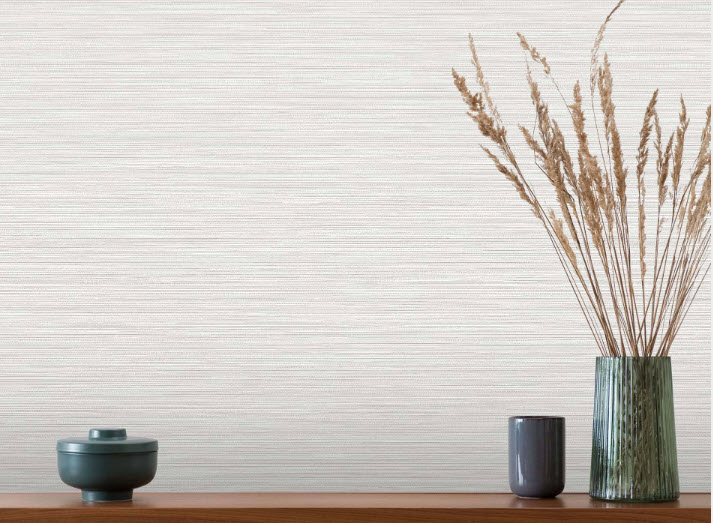
The phrases “sustainable wallcovering” and “recycled wallcovering” are close cousins, but they are not identical twins. All recycled wallcoverings are, by definition, sustainable. However, a wallcovering can be fully sustainable without containing a single gram of post-consumer recycled content. The difference is nuanced, yet it matters deeply to architects, designers, procurement teams, and sustainability directors who are writing tomorrow’s specifications today.Sustainable Wallcoverings – The Holistic Standard“Sustainable wallcovering” is the broader, more encompassing term. It doesn’t just describe what the product is made of; it describes how the entire life of the product is managed—from the sourcing of raw materials to the day, ten or fifteen years from now, when the final renovation crew peels it off the wall.
To earn the label “sustainable” in the professional contract world today, a collection almost always carries NSF/ANSI 342 certification (Bronze level or higher). That third-party seal is the industry’s gold standard and the quickest way for a specifier to know, without poring over a 200-page submittal, that the wallcovering in front of them has been rigorously vetted across every phase of its existence:
- Energy and water used in manufacturing
- Emissions and waste generated during production
- Chemical composition and indoor-air-quality impact
- Ethical labor practices and supply-chain transparency
- Durability and long-term performance under real-world abuse
- Proven end-of-life options (recycling, down-cycling, or safe incineration)
A sustainable wallcovering might be made from virgin vinyl, bio-based polymers, or rapidly renewable fibers—and still meet or exceed every one of those criteria. The point is the entire system has been designed to lighten the planet’s load, not just one flashy ingredient.Recycled Wallcoverings – Closing the Loop with Yesterday’s Materials“Recycled wallcovering,” on the other hand, proudly advertises that a significant percentage of its content—often 20–40% or more post-consumer or post-industrial material—has been diverted from landfills and given a second life.A generation ago, recycled paper faced an uphill battle: it was dingy, weak, and prone to tearing during hanging. Those days are long gone. Today’s recycled contract wallcoverings are Type II powerhouses—20 oz or heavier—capable of shrugging off the same gurneys, luggage carts, and juvenile fingerprints as their virgin counterparts. Advances in pulping, de-inking, and reinforcement technology have produced recycled substrates that are brighter, stronger, and more color-consistent than many traditional osnaburg backings.
And the aesthetics? Designers now have thousands of patterns—sophisticated textures, photographic murals, metallic effects, and custom digital prints—all executed flawlessly on recycled grounds. Visually and performatively, there is no compromise. In many cases, the recycled versions actually outperform older virgin formulations in tear strength and stain resistance because manufacturers have had to innovate aggressively to overcome the early limitations of reclaimed fiber.Where They Converge – And Why the Market Is Moving So QuicklyAt their core, both categories share the same mission: install something beautiful and bulletproof today that won’t become tomorrow’s landfill problem.Both are engineered for extraordinarily long service lives—easily a decade or more in even the toughest healthcare or hospitality settings—and both are increasingly backed by manufacturer or third-party take-back programs that ensure the material is reclaimed and reborn rather than buried.
The explosive growth of LEED v4/5, WELL, Living Building Challenge, and corporate ESG mandates has turned these once-niche offerings into mainstream expectations. When a global hotel brand, a major university system, or a Fortune-500 headquarters issues an RFP today, NSF/ANSI 342 compliance and documented recycled content are frequently non-negotiable line items. Specifiers no longer have to choose between responsibility and performance; the industry has finally delivered products that give them both—in abundance.
So while the technical distinction between “sustainable” and “recycled” still exists, the practical takeaway is simple and powerful: the contract wallcoverings being hung in the world’s best new buildings aren’t just tougher than residential papers—they’re smarter, cleaner, and designed with the next generation in mind. And that’s a trend that isn’t slowing down anytime soon.
